Trichomes play a crucial role in cultivating and harvesting many plants, particularly cannabis. These tiny, hair-like structures are responsible for producing and storing essential oils, terpenes, and cannabinoids, which contribute to the overall quality and potency of the plant.
Understanding the ripeness of trichomes is essential for growers, as harvesting at the right time can significantly impact the final product. In this article, we will explore the signs of overripe trichomes, the importance of harvesting at the optimal time, techniques for assessing trichome ripeness, and how proper trichome management can maximize both yield and quality.
Identifying overripe trichomes is a crucial skill for any cannabis cultivator. When trichomes become overripe, they undergo changes in color, texture, and composition, which can decrease potency and overall quality. By learning to recognize these signs, growers can ensure that their plants are harvested at the peak of ripeness, maximizing the desired effects and flavors.
Understanding Trichomes and Their Role in Harvesting
You can easily identify when trichomes are overripe by examining their milky color and observing their bulbous shape, resembling tiny crystals glistening in the sunlight.
Trichomes are small, hair-like structures covering plants’ surface, including cannabis. They play a crucial role in producing various compounds, such as cannabinoids and terpenes, which contribute to the unique effects and flavors of different strains.
Trichome morphology and development are influenced by various factors, including genetics, environmental conditions, and plant age.
Trichomes go through different stages of development, starting from clear, then progressing to a milky white color, and finally turning amber or brown as they become overripe. The milky color indicates that the trichomes are at their peak potency, containing the highest concentrations of cannabinoids.
The bulbous shape of overripe trichomes results from the accumulation of these compounds within the glandular head of the trichome. This is why they are often described as resembling tiny crystals, as they reflect light and give the appearance of sparkling crystals.
Factors affecting trichome ripeness include genetics, as different strains have different natural ripening times. Environmental conditions such as temperature, humidity, and light intensity can also influence ripening. Trichomes tend to ripen faster in warmer temperatures and higher humidity levels. Additionally, plant age plays a role, as trichome development increases as the plant matures.
Identifying the Signs of Overripe Trichomes
By closely examining their appearance, the signs of overripe trichomes can be identified. When trichomes are overripe, they tend to become darker in color, often turning amber or brown. This color change is one of the most noticeable visual cues for determining trichome ripeness. Overripe trichomes may also appear swollen or enlarged compared to their younger counterparts.
The impact of overripe trichomes on potency and flavor is significant. Overripe trichomes have a higher concentration of CBN (cannabinol), a compound associated with a more sedative and less psychoactive effect. This means that cannabis with overripe trichomes may have a decreased potency and may be less stimulating compared to cannabis with trichomes that are harvested at the optimal time.
Furthermore, overripe trichomes can also contribute to a change in flavor. As trichomes mature, they produce different terpenes responsible for the distinctive aroma and taste of cannabis. Overripe trichomes may result in a more earthy or musky flavor profile, which may not be desirable for some users.
Importance of Harvesting at the Right Time
Timing is crucial when harvesting trichomes, as understanding their ripeness ensures optimal results. Harvesting too early can have a significant impact on the quality and potency of the final product. When trichomes are harvested prematurely, they may not have reached their full potential in cannabinoid and terpene production. This means that the effects of the harvested plant material may be weaker and less desirable.
Harvesting too early may lack flavor and aroma, as these qualities are developed during the later stages of trichome ripeness.
Several factors influence the ripeness of trichomes, making it essential to consider them when determining the right time to harvest. One of the most important factors is the strain of the plant itself. Different strains have different maturation times, and it’s crucial to understand the specific characteristics of each strain to ensure optimal harvest timing.
Other factors that influence trichome ripeness include environmental conditions, such as temperature and humidity, as well as the plant’s overall health and nutrition. Monitoring these factors throughout the growth cycle can help growers determine the ideal time for harvesting trichomes and achieve the desired effects and qualities in the final product.
Techniques for Assessing Trichome Ripeness
When it comes to assessing trichome ripeness, two primary techniques can be used: microscopic examination and trichome color analysis.
Microscopic examination involves closely observing the trichomes under a microscope. This allows for a more detailed examination of the trichomes, including their shape, size, and overall condition. Experts can determine if they are fully developed and ready for harvest by examining the trichomes at a microscopic level. This technique is particularly useful for experienced growers with a keen eye for trichome development.
On the other hand, trichome color analysis involves assessing the trichomes’ color. Trichomes change color as they mature, starting from clear or translucent and gradually becoming cloudy or opaque. The ideal time to harvest cannabis plants is when the trichomes are mostly cloudy with a few amber or brown trichomes. This indicates that the plant has reached its peak potency and flavor. However, if the trichomes are mostly amber or brown, it suggests that the plant is past its prime and may have a more sedative effect.
How Does Trichome Ripeness Affect Marijuana Sales in Michigan?
Trichome ripeness significantly impacts Michigan marijuana sales record. As trichomes mature, THC levels rise, affecting the potency and quality of the product. Consumers are more likely to purchase marijuana with fully ripened trichomes, leading to higher sales and revenue for the industry in Michigan.
Maximizing Yield and Quality through Trichome Management
Maximize your yield and quality by effectively managing trichomes to ensure peak ripeness. Trichomes are small, resinous glands found on the surface of cannabis flowers and leaves, and they play a crucial role in determining the potency and overall quality of the plant.
By understanding how to optimize trichome development, you can enhance the density and potency of these glands, resulting in a higher quality and more potent final product.
One key aspect of managing trichomes is to focus on improving their development through the use of nutrients. Trichomes require specific nutrients, such as nitrogen, phosphorus, and potassium, to reach their full potential. Nitrogen helps to promote overall plant growth and leaf development, which in turn supports trichome production. Phosphorus is essential for energy transfer and plays a critical role in the formation of trichomes. Potassium helps to regulate water and nutrient uptake, ensuring that trichomes receive the necessary resources for growth.
Environmental conditions, such as temperature and humidity, can impact trichome development. It’s essential to maintain optimal growing conditions to ensure that trichomes thrive.
Proper harvesting techniques and timing are crucial to maximizing trichome ripeness. Harvesting too early can result in underdeveloped trichomes, while waiting too long can cause trichomes to become overripe and degrade in quality. By carefully monitoring trichomes and harvesting at the peak of ripeness, you can maximize both yield and quality, resulting in a superior final product.
Final Takeaway
Being able to tell when trichomes are overripe is crucial for maximizing the yield and quality of a harvest. Trichomes play a vital role in the development of cannabis plants, as they contain most of the plant’s cannabinoids and terpenes. Harvesting at the right time ensures the trichomes have reached their peak potency and flavor profile.
Identifying the signs of overripe trichomes requires a keen eye and attention to detail. Overripe trichomes often appear amber or brown in color, indicating that they’ve started to degrade. These trichomes may also become brittle and break easily, leading to a loss in potency.
By monitoring the color and texture of the trichomes, growers can determine the optimal time to harvest.
Harvesting too early or too late can significantly affect the final product. Harvesting too early results in a lower concentration of cannabinoids and terpenes, leading to a less potent and flavorful end product. On the other hand, harvesting too late can result in a degradation of the trichomes, leading to a loss in potency and quality.
Understanding when trichomes are overripe is crucial for achieving optimal results in cannabis cultivation. By carefully monitoring the color and texture of the trichomes and utilizing proper harvesting techniques, growers can ensure that their harvest is at peak potency and quality.

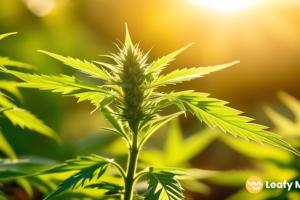
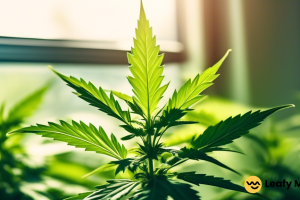





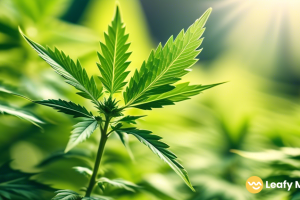
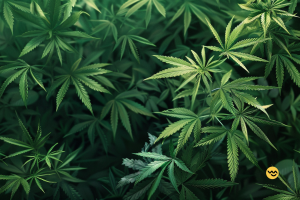
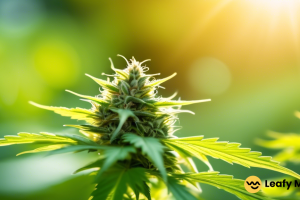
Leave a Reply